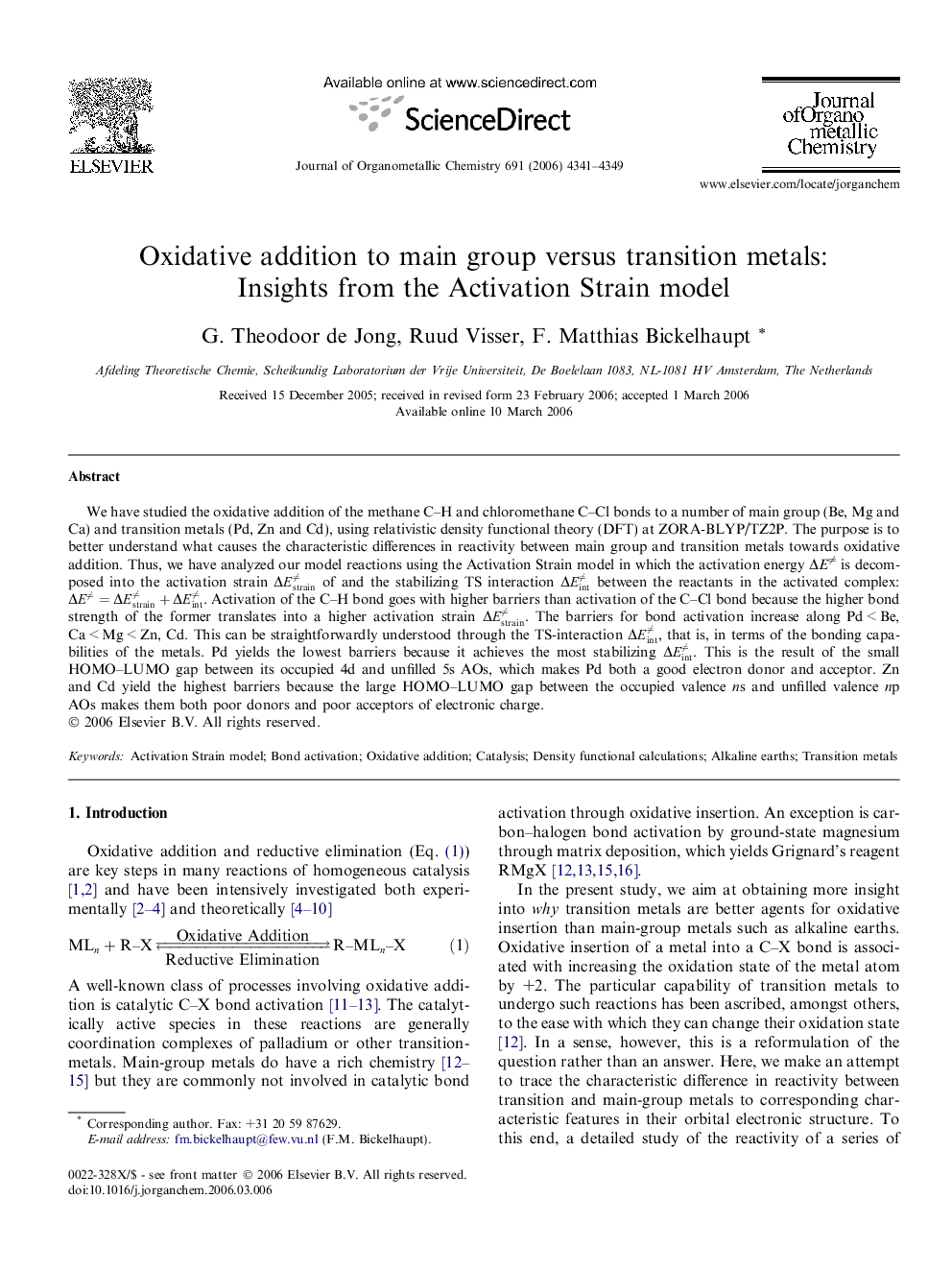| کد مقاله | کد نشریه | سال انتشار | مقاله انگلیسی | نسخه تمام متن |
|---|---|---|---|---|
| 1325589 | 977391 | 2006 | 9 صفحه PDF | دانلود رایگان |

We have studied the oxidative addition of the methane C–H and chloromethane C–Cl bonds to a number of main group (Be, Mg and Ca) and transition metals (Pd, Zn and Cd), using relativistic density functional theory (DFT) at ZORA-BLYP/TZ2P. The purpose is to better understand what causes the characteristic differences in reactivity between main group and transition metals towards oxidative addition. Thus, we have analyzed our model reactions using the Activation Strain model in which the activation energy ΔE≠ is decomposed into the activation strain ΔEstrain≠ of and the stabilizing TS interaction ΔEint≠ between the reactants in the activated complex: ΔE≠=ΔEstrain≠+ΔEint≠. Activation of the C–H bond goes with higher barriers than activation of the C–Cl bond because the higher bond strength of the former translates into a higher activation strain ΔEstrain≠. The barriers for bond activation increase along Pd < Be, Ca < Mg < Zn, Cd. This can be straightforwardly understood through the TS-interaction ΔEint≠, that is, in terms of the bonding capabilities of the metals. Pd yields the lowest barriers because it achieves the most stabilizing ΔEint≠. This is the result of the small HOMO–LUMO gap between its occupied 4d and unfilled 5s AOs, which makes Pd both a good electron donor and acceptor. Zn and Cd yield the highest barriers because the large HOMO–LUMO gap between the occupied valence ns and unfilled valence np AOs makes them both poor donors and poor acceptors of electronic charge.
The transition metal Pd is intrinsically more reactive towards oxidative insertion into a C–X bond than alkaline earths and group-12 transition metals. This can be mainly ascribed to palladium’s excellent electron-donating and accepting capabilities associated with the high-energy 4d HOMO and low-energy 5s LUMO.Figure optionsDownload as PowerPoint slide
Journal: Journal of Organometallic Chemistry - Volume 691, Issue 21, 15 October 2006, Pages 4341–4349